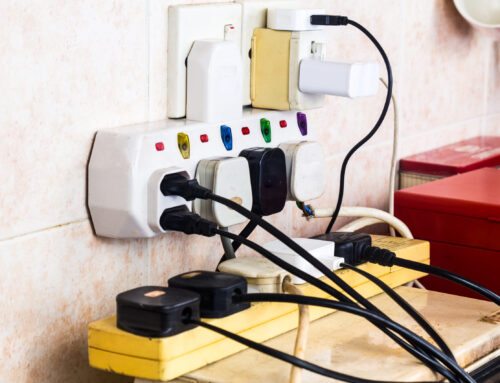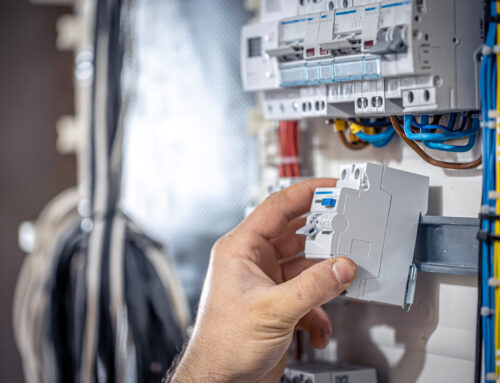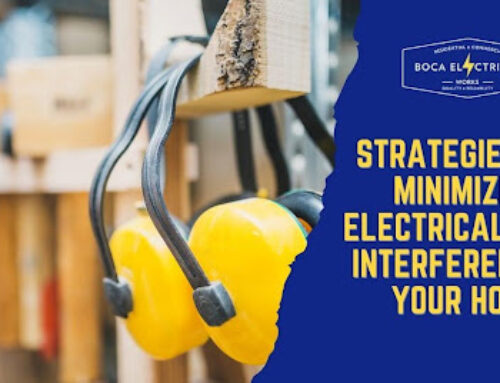In the realm of residential electrical safety, Ground Fault Circuit Interrupter (GFCI) outlets stand as unsung heroes, guarding households against the risks of electric shocks and potential fires. These critical components are essential in areas exposed to moisture and are a staple in modern electrical safety standards. This comprehensive guide is crafted to navigate homeowners through the nuanced processes of troubleshooting and replacing GFCI outlets, ensuring their living spaces remain safe and compliant. Blending practical, step-by-step instructions with insightful information about the functionality and importance of GFCI outlets, our article serves both as a how-to manual and an educational resource, tailored to empower readers with the knowledge and confidence to address their electrical safety needs effectively.
Understanding GFCI Outlets and Their Importance in Electrical Wiring Residential
GFCI outlets, or Ground Fault Circuit Interrupter outlets, are a pivotal element in the safety framework of residential electrical systems. Designed to protect individuals from electrical shock, these outlets monitor the flow of electricity in a circuit and promptly shut off power if a fault is detected, thereby mitigating the risk of electric shock and fire. Understanding the role and importance of GFCI outlets is crucial for homeowners, as these devices are not just beneficial but often required in areas prone to moisture such as bathrooms, kitchens, garages, and outdoor spaces. Here’s a brief overview:
- Safety Mechanism: GFCI outlets prevent electric shock by detecting imbalances in electrical current and automatically cutting off power.
- Code Compliance: Residential electrical codes mandate the installation of GFCI outlets in wet or damp areas of a home to ensure safety.
- Preventive Measure: By interrupting power during a ground fault, GFCI outlets help in preventing fires caused by faulty wiring or appliance malfunctions.
- Testing Regularity: It’s recommended that GFCI outlets be tested monthly to ensure they are functioning correctly, providing an ongoing safety measure against electrical hazards.
Common Signs of GFCI Outlet Failure
Recognizing the early signs of GFCI outlet failure is crucial for maintaining the electrical safety and integrity of your home. These specialized outlets are engineered to protect against electrical shocks by promptly interrupting the power flow when a fault is detected. However, like all electrical components, GFCI outlets can wear out or malfunction, necessitating timely troubleshooting or replacement to prevent potential hazards. Here are some common symptoms that indicate a GFCI outlet may be failing:
- No Power: Devices plugged into the GFCI outlet do not receive power, even when the outlet’s reset button is engaged.
- Inability to Reset: The GFCI outlet’s reset button does not stay engaged when pressed or does not restore power to the outlet.
- Frequent Tripping: The outlet trips frequently or under normal conditions, indicating sensitivity or wiring issues.
- Physical Damage: Signs of burn marks, buzzing sounds, or a hot-to-touch surface suggest internal damage or electrical faults.
- Age: Older GFCI outlets are more prone to failure; outlets over ten years old may require evaluation and possible replacement.
Identifying these symptoms early can guide homeowners in seeking the appropriate GFCI problems and solutions, ensuring continued protection against electrical shock and contributing to the overall electrical safety of the residence.
Step-by-Step Guide to Troubleshooting GFCI Outlets
In this section, we delve into the practical aspects of identifying and resolving issues with GFCI outlets, a crucial skill for maintaining electrical safety and functionality in your home. Through a detailed, step-by-step guide, we’ll cover the essential troubleshooting steps and testing procedures, ensuring you can efficiently diagnose and address common problems. Here are the key steps to follow:
- Safety First: Before starting any troubleshooting, ensure all safety precautions are in place. Turn off the power supply to the outlet at the breaker box to prevent any electrical accidents.
- Visual Inspection: Examine the GFCI outlet for any visible signs of damage, such as cracks, burns, or discoloration. Such physical damage might indicate internal faults requiring replacement.
- Reset the Outlet: Press the “Reset” button on the GFCI outlet. If it does not stay in, or the outlet does not restore power, there may be an underlying issue preventing the reset.
- Test Button Functionality: Use the “Test” button on the outlet, which should cause the “Reset” button to pop out, indicating the GFCI is functioning correctly. If the “Reset” button does not pop out, the outlet may need replacing.
- Use a Testing Device: For a more thorough evaluation, use a GFCI tester—a tool designed to check for proper GFCI function. Follow the tester’s instructions to ascertain the outlet’s safety and operational status.
DIY vs. Professional GFCI Outlet Replacement
When it comes to replacing GFCI outlets, homeowners face a crucial decision: embark on a DIY project or enlist the expertise of a professional electrician. This choice should be informed by several considerations, focusing on safety, complexity, and the value of professional services. Below, we outline these factors in a comparative table to help guide this important decision.
| Consideration | DIY Replacement | Professional Replacement |
| Safety | Safety is paramount. DIYers must understand electrical safety practices and have the necessary tools. | Professionals have the training and experience to ensure the job is done safely, adhering to all codes. |
| Complexity | Suitable for individuals with a good understanding of electrical systems and comfortable performing minor electrical tasks. | Advisable for complex issues, unfamiliar electrical systems, or when multiple outlets need replacing. |
| Time and Efficiency | DIY projects can be time-consuming, especially with learning or troubleshooting involved. | Professionals can complete the job quickly and efficiently, saving homeowners time. |
| Cost | Initially lower if you have the tools and knowledge. However, mistakes can lead to higher costs in repairs and damage. | Higher upfront costs but comes with the assurance of quality, warranty, and no hidden future expenses. |
| Compliance and Guarantee | DIY projects may not always comply with local electrical codes, risking future issues or fines. | Professional services ensure compliance with all regulations and typically offer a warranty on the work. |
This table highlights the critical aspects homeowners must consider, emphasizing that while DIY projects may seem appealing, the safety, efficiency, and compliance guaranteed by professional electrical services often present the most prudent option.
When to Call a Professional for Electrical Repairs
There are specific scenarios where the need for professional electrical services becomes not just a preference but a necessity. Recognizing these situations can help homeowners make informed decisions, ensuring safety and efficiency in electrical repairs, especially concerning GFCI replacement. Here are key instances when calling a professional electrician is the safest and most efficient choice:
- Multiple Outlet Failures: When more than one GFCI outlet fails or shows signs of malfunction, it may indicate a broader electrical system issue that requires professional diagnosis and repair.
- Outlets Not Resetting: If GFCI outlets frequently trip or won’t reset, a deeper electrical problem might be at play, necessitating expert intervention.
- Old or Outdated Wiring: Homes with outdated or deteriorating wiring systems pose significant challenges and risks. Professionals can safely navigate these complexities and ensure modern standards are met.
- No Ground Wire: In older homes, some outlets may lack a ground wire, making DIY GFCI installation risky. Electricians can address grounding and compliance issues.
- Electrical Code Compliance: Ensuring that all electrical work complies with local codes is crucial for safety and legality. Electricians are up-to-date on these regulations and can guarantee compliance.
- After Water Damage: Water and electricity are a dangerous mix. Following any significant water damage, a professional should inspect and possibly replace electrical components to prevent hazards.
Upgrading Your Home with GFCI Outlets

image for Troubleshooting and Replacing GFCI Outlets: A Comprehensive Guide
Upgrading your home with GFCI outlets is a significant step towards ensuring a safer living environment while also adhering to residential electrical codes. The transition from older outlets to GFCI-equipped ones brings numerous benefits, enhancing not just safety but also the value and compliance of your property. Here’s a look at the key advantages:
- Enhanced Safety: GFCI outlets are designed to protect against electrical shocks by automatically cutting off power when a fault is detected, significantly reducing the risk of electrocution and electrical fires.
- Code Compliance: Installing GFCI outlets in required areas (such as bathrooms, kitchens, garages, and outdoor spaces) ensures your home meets current residential electrical codes, which is essential for both safety and legality.
- Increased Home Value: Homes that adhere to the latest electrical safety standards, including GFCI outlet installation, are often more appealing to buyers, potentially increasing the property’s market value.
- Insurance Benefits: Some insurance companies offer reduced premiums for homes that demonstrate adherence to safety standards, including the use of GFCI outlets.
- Peace of Mind: Knowing your home is equipped with GFCI outlets, which monitor and protect against electrical hazards, provides homeowners with a sense of security, especially in areas prone to moisture where the risk of shock is higher.
Key Takeaway
The critical takeaway from our comprehensive guide on GFCI outlets is the undeniable importance of these devices in ensuring the electrical safety of your home. GFCI outlets, designed to protect against electrical shocks by interrupting power flow upon detecting ground faults, are an essential component of modern electrical safety standards. Their installation in key areas of the home, as mandated by residential electrical codes, underscores their significance in preventing electrical accidents and enhancing overall safety.
Furthermore, the ability to troubleshoot and replace GFCI outlets, whether through DIY efforts or by enlisting professional services, is crucial in maintaining the protective measures these devices offer. For homeowners, the knowledge and steps outlined in this guide serve not just as a means to address current electrical needs but also as a preventive measure, ensuring that their living spaces continue to be safe and compliant with electrical standards. In essence, the proper functioning of GFCI outlets is a cornerstone of home safety, warranting attentive maintenance and timely updates to keep up with evolving safety codes and technology.
People Also Ask
Ground Fault Circuit Interrupter (GFCI) outlets play a crucial role in electrical safety within homes. Here are some common questions related to GFCI outlets:
Can a GFCI outlet prevent all types of electrical shocks?
While GFCI outlets are highly effective at preventing electric shocks from ground faults, they may not protect against all types of electrical shocks, such as those caused by faulty appliances or wiring.
How often should GFCI outlets be tested for functionality?
GFCI outlets should be tested for functionality at least once a month by pressing the “Test” and “Reset” buttons to ensure they are working correctly, providing ongoing protection against electrical hazards.
Are GFCI outlets required in all rooms of a house?
GFCI outlets are required in specific locations within a house, such as bathrooms, kitchens, garages, outdoor areas, and within six feet of sinks or water sources, but they are not necessarily mandated for all rooms.
What is the difference between a GFCI outlet and a regular outlet?
The primary difference between a GFCI outlet and a regular outlet lies in their safety mechanisms: GFCI outlets constantly monitor the flow of electricity and can quickly interrupt power if they detect a ground fault, whereas regular outlets lack this feature.
Can I install a GFCI outlet where there is no ground wire?
Yes, it’s possible to install a GFCI outlet even where there is no ground wire, as GFCI outlets can still provide protection against ground faults without requiring a ground connection. However, it’s crucial to follow proper installation procedures outlined in the manufacturer’s instructions.
Secure Your Home’s Electrical Safety with BocaElectrical
Ensure your home’s electrical safety with BocaElectrical’s expert services. Our mission is to provide reliable, efficient, and safe electrical solutions to meet your residential needs. Contact us today to upgrade your home with GFCI outlets and safeguard your loved ones. Whether it’s updating old wiring, installing new GFCI outlets, or conducting thorough electrical safety inspections, our team of qualified professionals is here to ensure your home remains a safe haven. Don’t wait for electrical issues to arise; take proactive steps with BocaElectrical and enjoy peace of mind knowing your home is protected by the best in the business.











